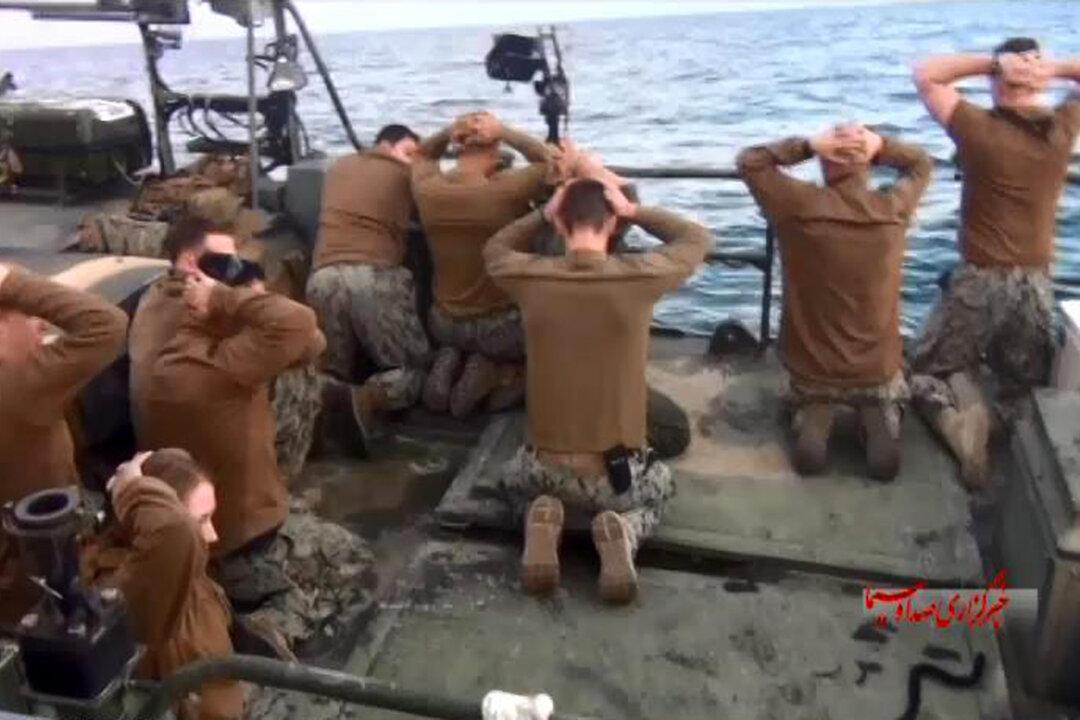Two U.S. Navy boats were on their way from Kuwait to Bahrain on Jan. 12 when one of them broke down—in Iranian territorial waters.
Moments later, the engine problem was the least of their worries.
An Iranian Revolutionary Guard Corps Navy (IRGCN) patrol craft approached at high speed with weapons drawn.
The American sailors were detained by Iranians, and the details of the events that unfolded during the incident were released in a U.S. Navy report on Thursday.
The Iranian’s identified themselves and told the crew members to back away from their weapons.
One of the boat captains tried to tell the Iranians everything was a misunderstanding.
“Hey, I’m sorry this was an accident, we didn’t mean to be here, our boat broke down, we’re just trying to continue to Bahrain,” the boat captain told the Iranians, according to the report.
The code for the military says officers are obligated to defend their units, but in this case the boat captain tried to deescalate the situation and not fight back.
“I didn’t want to start a war with Iran,” one of the boat captains told investigators, “My thought at the end of the day was that no one had to die for a misunderstanding.”
“I thought ok, what’s the commander’s intent here,” added the official, “the Commander-in-chief would not want me to start a war over a mistake, over a misunderstanding.”
The 10 crew members were taken by the Iranians to Farsi Island where they were held overnight.
The sailors were put in a room and interrogated as a group, and then seven out of the 10 crew members were interrogated individually.




